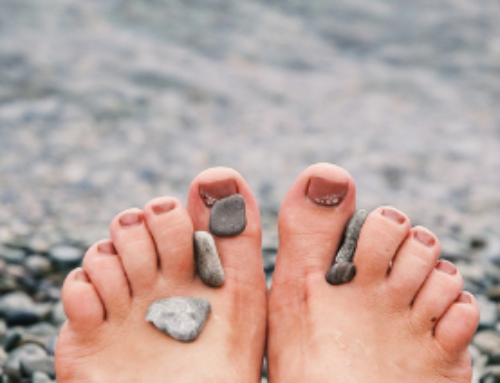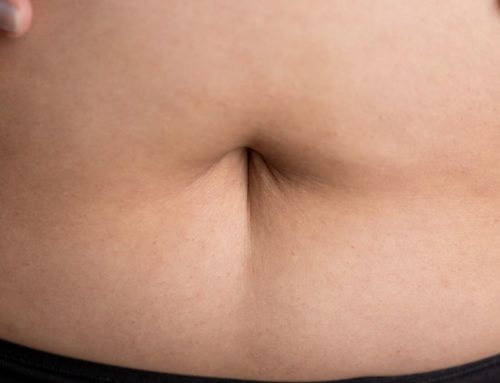Ask anyone involved in an essential oil multi level marketing corporation about what to do for seasonal allergies and you’ll get the recommendation of Lemon, Lavender, and Peppermint. I don’t know who came up with this originally but I invite you to look at this recommendation with a critical eye for safety and efficacy. Ready? Let’s go!
The Antihistamine Claim
Unsafe and ineffective usage advice from a Pinterest pin
According to multiple bloggers this combination of essential oils “create a powerful all-natural antihistamine.” The big problem with this oft-repeated statement is that there’s no evidence that these three essential oils, individually or together, have antihistamine actions.
Histamines play a critical role in maintaining homeostasis within the body as well as acting as neurotransmitters to direct leukocytes in the face of immune function. When we have too many in the system it is called histadelia and we see a rise in environmental allergy symptoms. Common ways of managing this over-abundance of histamines in the system during mold, grass, or pollen cycles are through lifestyle and diet changes, herbs and supplements, and/or the use of over-the-counter and prescription medications.
Lemon fruit and juice are rich in bioflavinoids which do help reduce the amount of histamines in the system as well as help clear them. So, drinking a warm cup of water with fresh squeezed lemon juice would have a better chance of reducing symptoms caused by histadelia.
Safety Concerns with Dosing
Another Pinterest pin giving unsafe usage advice
Safe use of essential oils is a primary concern for me when I see recommendations to use this combination together. If I spend 5 minutes on Pinterest or a Google search I’ll see recommendations to apply these three EOs undiluted or with a small amount of carrier oil, in gel capsules, on the tongue, or in a glass of water. Let’s address these individually:
- Undiluted – Lemon essential oil is phototoxic and has a maximum dermal use guideline of 2%, so that’s 2 drops in a teaspoon (5 mls) of carrier oil before applying to the skin. Lavender essential oil can be used at standard skin safe guidelines of 0.5-3% for large areas of the body (neck + back for example). Peppermint essential oil has a maximum dermal use guideline of 5.4% (Tisserand Young 2014).
- Oral dosing via capsule – per the Commission E Monograph on Peppermint essential oil the daily oral dose delivered in an enterically-coated capsule is 6-12 drops which is approximately 210-420 mg (milligrams) when measured from a European orifice reducer. This popular gelatin capsule has 100 mg each of Peppermint, Lemon, and Lavender with a recommended dose of 1-2 capsules a day, or 100-200 mg. In the graphic above we see the recommendation of 9 drops of each essential oil in a capsule up to 3x daily. Assuming these are MLM bottles with their larger orifice reducers this is approximately 540-1,620 mg of each essential oil in a capsule with a max dose of 1,620 mg per day. Tisserand and Young recommend a maximum adult daily oral dose of 152 mg due to the hepatotoxicity of menthofuran and beta-pulegone. So if you’re using this method you’re overdosing by 7 drops in just the first capsule.
- Glass of Water– I’ve blogged about this safety concern on several occasions in Friends don’t let friends drink essential oils, Essential oils and GRAS: What it really means, and Why essential oils are not water flavoring agents.
- On/Under the Tongue – the menthol in the peppermintwill have a burning, cooling, and numbing sensation on the tongue and entirety of the mouth cavity at this dose. The d-limonene in the lemon will irritate, and burn the tongue, gums, roof and floors of the mouth, inner cheeks (buccal cavity) and the entire mouth cavity which may result in blisters or bleeding to occur at this dose. The lavender will cause numb and irritate the entire mouth cavity at this dose.
- On the Feet – since this is the region farthest removed from the sinuses, eyes, and throat where the majority of environmental allergy symptoms occur it is not an effective dose form. Undiluted or improperly diluted safety concerns apply to the feet just as much as the rest of the body.
- In the Eyes – the first infographic from Pinterest above recommends cupping the hands over the eyes. Unfortunately this does expose the eyes to volatilized essential oils and can burn the tissue around the eyes and eyes. See Robert Tisserand’s post on Essential oils and eye safety.
When Oral Dose Causes Metabolic Issues
What I’ve been seeing in my practice over the past couple of years is the metabolic dysregulation that occurs when someone exceeds their oral dosing threshhold. Things that affect essential oil metabolism include autoimmune conditions, obesity, gastrointestinal disorders (e.g. SIBO, Crohn’s, IBS, et cetera), methylation issues, and genetic disorders like Glucose-6-phosphate dehydrogenase deficiency (G6PD). All of these need to be taken into consideration in addition to current medications, overall constitution, and health history before oral dosing of essential oils is considered. So even if the individual isn’t exceeding the known oral dose guidelines for an essential oil they can still be overdosing.
When an essential oil is taken in a gelatin capsule it ruptures in the stomach and is subjected to 1st pass metabolism – it is taken up by the liver to be cleared. Overdose in this way starts to affect metabolism with symptoms ranging from weight gain (20-40+ pounds within 12 months), dysregulation in the liver’s ability to convert glycogen to glucose and back again, and a strong impact on the hypothalamus-pituitary-adrenal (HPA) axis. So someone using this dose form for allergy season starts having issues managing weight, food cravings, experiences sugar crashes, loses control of their blood pressure, and/or struggles managing anger and frustration.
What is Effective for Environmental Allergies?
For acute allergy treatment I look to essential oils with mucolytic, decongestant, and anti-inflammatory biophysical actions. I rely on direct inhalation to target the area of the sinuses the quickest – either via an Aromastick or a cotton ball in a plastic zip-top baggie. One of my favorite aromatic remedies though is a hydrosol sinus rinse a la the neti pot or a nasal bottle from the pharmacy.
Hydrosol Sinus Rinse
5 mls (1 teaspoon) hydrosol – Rosemary, Tea Tree, Lavender are good places to start
8-10 drops vegetable glycerin
18-20 drops of alcohol extract of Yerba Mansa (Anemopsis californica)
1 saline packet
distilled or boiled water
Disinfect your neti pot or nasal bottle. Add hydrosol, glycerin, Yerba Mansa, and saline packet to bottle. Fill according to manufacturer’s direction with either distilled water or recently boiled-then-cooled tap water. Use half the pot/bottle for each nostril. Using tap water poses the risk of unwanted fungus/mold, parasites, and bacteria being introduced so close to the brain.
For sinusitis and chronic allergy symptoms I recommend coming in for an aromatic formulation session to address impaction, inflammation, and infection in the sinus cavities that have been occurring for months or years. Direct inhalation and a hydrosol sinus rinse won’t get you the relief you’re looking for.









Andrea Butje shares this blend on her Youtube channel. Not for antihistamine action, but for analgesic, antimicrobial and anti-inflammatory. Not oral, but in a diffuser. I agree the MLM memes have bizarre dosing recommendations (I would infer it’s *most* effective in a diffuser, straight to the sinus cavities), but diffused at a ratio of 2/2/2 this blend is actually very relieving for sinus pain imo. (Note: I’m not nor have I ever been MLM connected.)
Interesting, Shelsea! A room diffuser isn’t a terribly effective dose form for environmental allergies so I didn’t even mention its use in this article. Thanks for chiming in!
Wow, what a great article! where do you get quality alcohol extract of Yerba Mansa?
Thanks, Jill! I recommend shopping local when possible so I’d suggest checking your local herbalist’s apothecary first. After that you might consider larger commercial outfits like Gaia Herbs, Herb Pharm, and Mountain Rose Herbs.
Interesting read. I buy oils from an MLM but have never relied on them for information. I love the oils–but never could quite get around the idea of putting oils in a capsule, because I knew they would be full strenth in the gut. That didn’t seem to me a great idea, nor does putting ANY oil, no matter how safe, neat on the skin seem safe. I’m pretty happy, all in all, to see confirmation. So, don’t blame it on MLM’s; do blame it on distributors that don’t do their homework. This does, after all, have to do with health care, and it behooves all of us to read, read, read, from expert sources.
BTW, I’ve pretty much gotten rid of a lot of pain in my body from lifestyle changes, including diet, heavy metal testing and detox, fasting, and parasite removal. EO’s are part of my regimen, but cannot do it all.
It pays to be an informed consumer in many ways, Joy. Thanks for stopping by!
I find that peppermint oil clears my sinuses land headaches like nothing else — I use a drop topically where it hurts. I am an acupuncturist and despise MLMs. If I recommend this to people, I will tell them to use a carrier oil, especially if they have sensitive skin.
I found this article very informative. The part about the effect of oils on the liver and weight gain, the blistering oils can cause, the silliness of putting oils on the feet — I wish I could somehow convince people of the damage they can do to themselves with oils.
Peppermint’s tropism is for the digestive system so I find it is worth considering when headaches are caused by GIT issues or tension in the phrenic nerve. But yeah, dilute, dilute, dilute. Thanks for stopping by!
This is such an important article. I’ve been doing a lot of research into the histamines’ role in the body and how antihistamines can actually affect natural processes like menstrual flow, etc. While essential oils are really powerful and wonderful, it’s not the only thing you can do to be healthy, relieve your sinuses, etc. Eating the right foods to heal your body works just as well and is far more long term.
Very helpful, Amy! I’d been reacting to essential peppermint oil. My mouth was sore. I stopped my oil yesterday. The reason I got into essential oils in the first place was to counteract toxic fragrances and odors (I can barely tolerate public buildings!). Do you have any safe methods for counteracting toxic fragrances and odors?
I enjoy your columns! Thanks.
Angela – I’ve had a few clients opt for Low Dose Allergen immunotherapy (LDA) for idiopathic environmental intolerances, also known as multiple chemical sensitivity. Here’s a directory of those healthcare professionals trained to administer LDA: http://www.drshrader.com/lda_physicians.htm.
I have never heard of Yerba Mansa. What is it used for? Thanks!
Jessica – Dara has written a lovely post on Yerba Mansa over here: https://albuquerqueherbalism.com/2016/10/11/going-deeper-with-yerba-mansa/.
Excellent advice and warnings. I’m loving the personal inhalers, less waste of the oils, less lotion to make for my EO blends. (I can’t stand straight oil on my skin.)